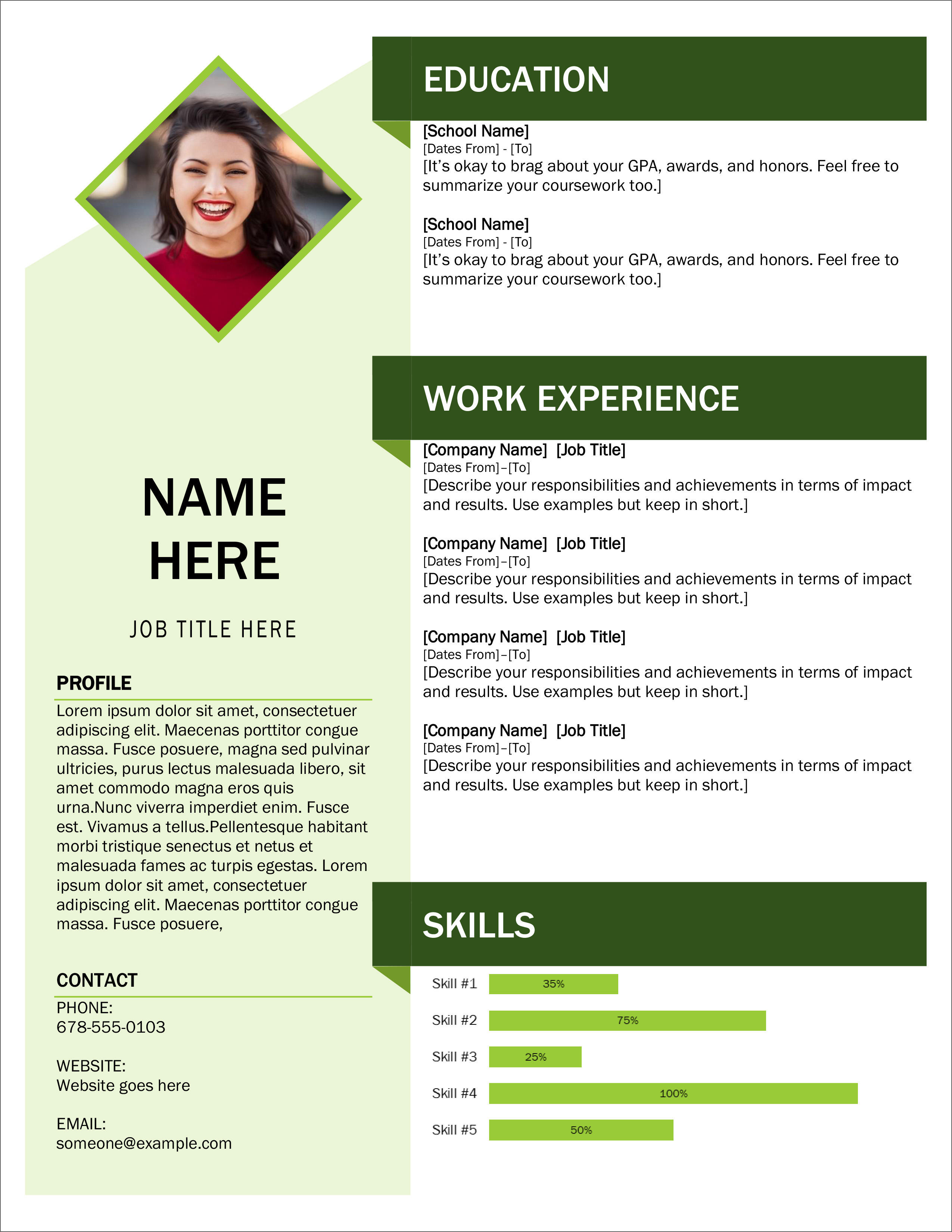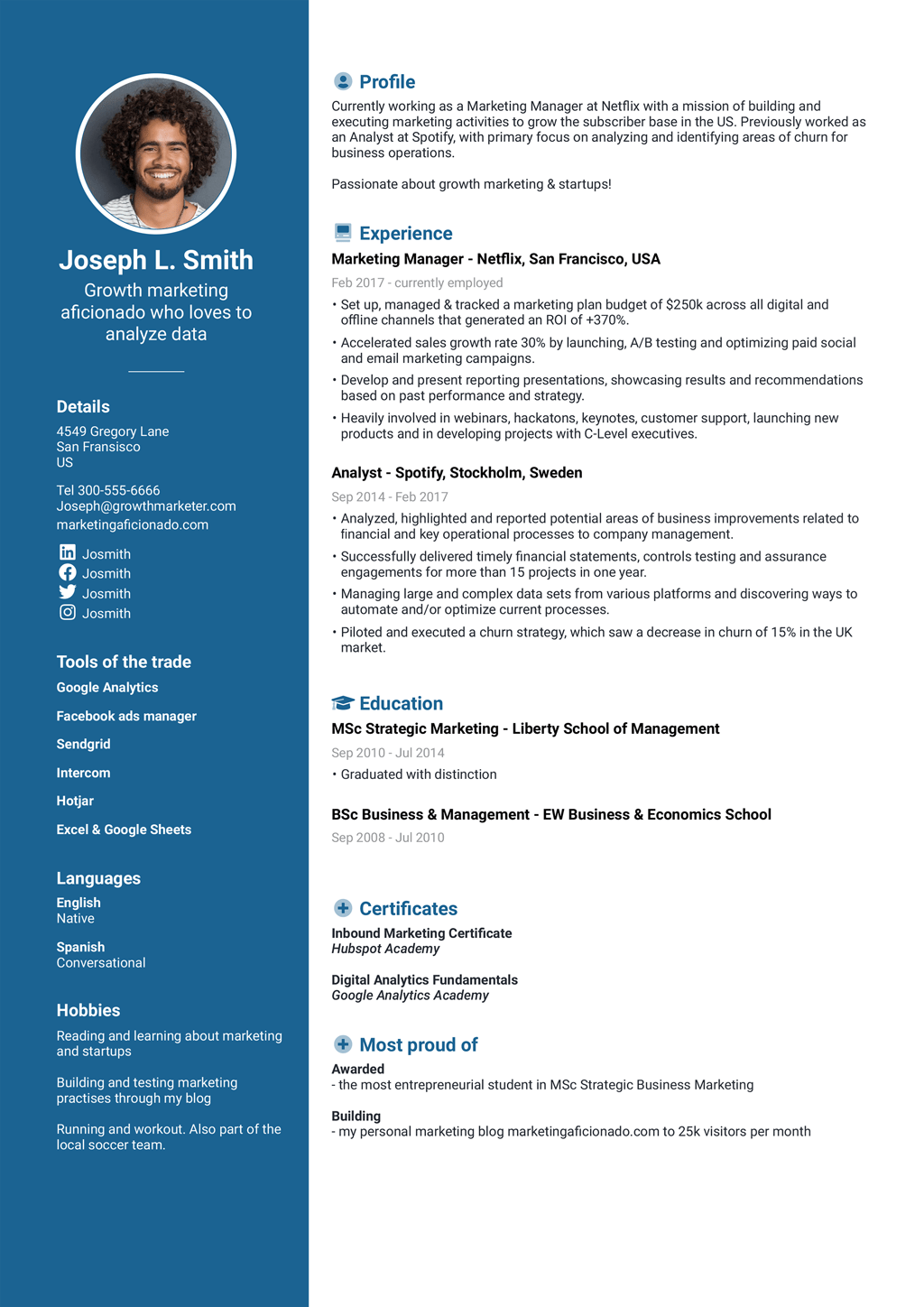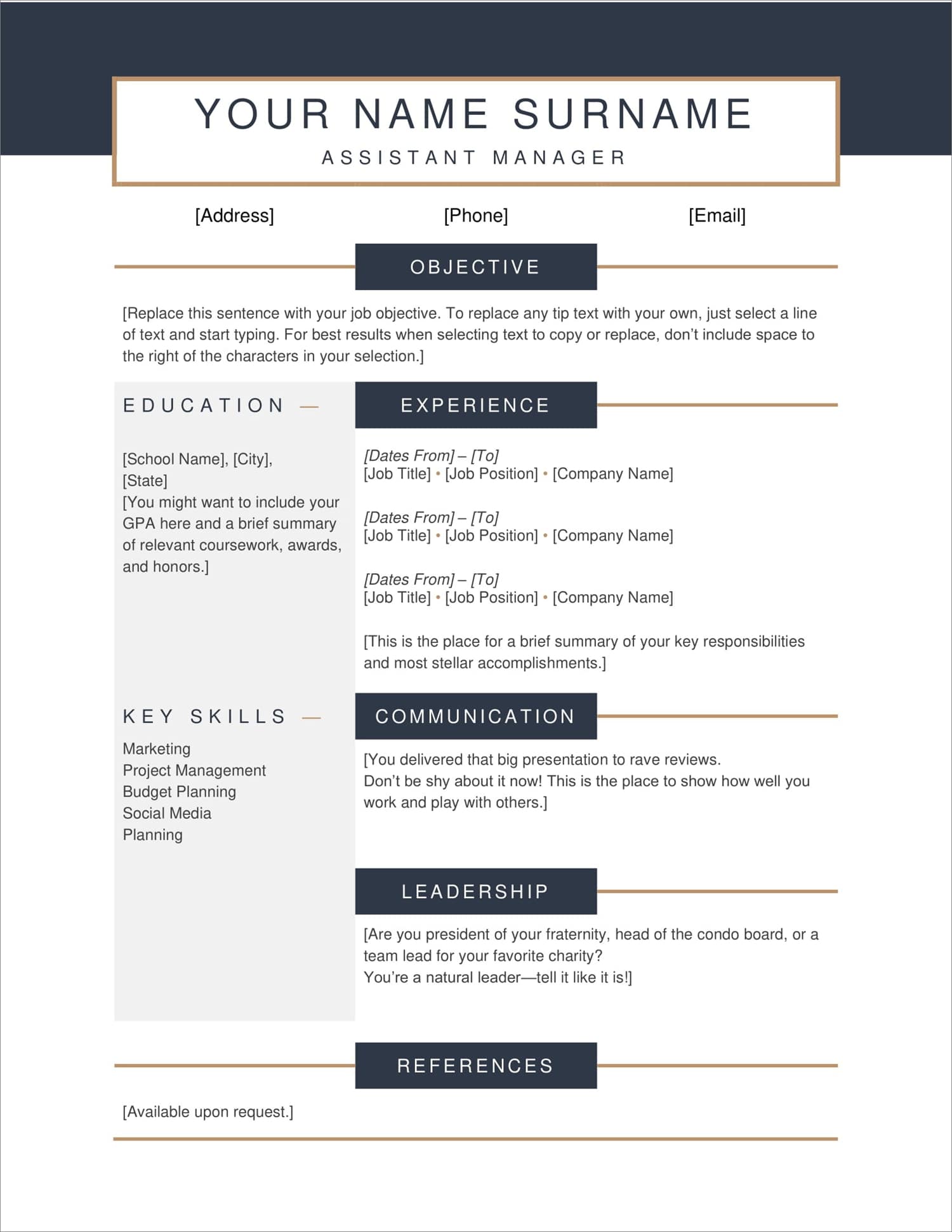
Now, if you want to create a work experience section that stands out, you want to focus on quantifiable achievements. Work experience on a resume is one of those things that’s easy to learn, hard to master.Įach work experience entry should contain the following:
#Resume Templates download how to
On the other hand, if you’re a student or just don’t have a lot of work experience, read our article on how to create a resume objective instead. To learn more about how to create a resume summary that excels, check out our guide. “Professional with X+ years of work experience in. Want your resume summary to stand out? Use this proven formula: It should, in 2-4 sentences, explain what your background is, and why it’s relevant for the position you’re applying for. Think of it as an introduction to the rest of your resume. Your resume summary is a “hook” that goes on top of your resume. all of our templates are one-page resume templates, so you shouldn’t have a lot of trouble sticking to the one-page limit! How to Write a Resume Summary? Long answer: check out our guide on how long should a resume be. If you have a lot of work experience (10 years +), sometimes it makes sense to make it 2 pages MAX if everything you mention is super relevant for the position you’re applying for. How Long Should a Resume Be?Īh, the most popular resume question in the world: “how long should your resume be?” If you want to learn more about resume formats, check out our comparison guide. Unless you’re looking to create a career change resume, we’d recommend sticking with this format. That’s the format most resumes you’ve seen follow - its main focus is your work experience, written down in reverse-chronological order.

In 99% of the cases, you’ll want to go with the Reverse Chronological resume format. If you want to personalize your resume a bit more, you can also include the following sections:įor more information on how to place these sections on your resume, check out our article on what to put on a resume. Instead, you should focus on what you DO have: education, projects, volunteering experience, hobbies & interests.įor a complete guide on how to make a resume with no work experience stand out, check out our article. If you’re applying for an entry-level job or an internship, no one expects you to have ANY work experience.

So, what the heck can you include in your resume if you have none? After all, most resume examples you see on the web are 80% about work experience. The process of writing a resume might seem super scary to you. How to Write a Resume for Your First Job? Want to learn how? Check out our complete guide on how to make a resume. If you manage to create a “good” resume, you’re going to 2x your chances of getting hired. When applying for a job, you’re (in most cases) going to be asked for a resume accompanied by a cover letter. Its main purpose is to show off your best self to potential employers.
#Resume Templates download professional
These would help you to apply for almost any position – from entry level to senior executive positions.Ĭlick on any of the link below to download the format that best fits your resume preparation needs.A resume is a brief summary of personal and professional experiences, skills, and education history. Any of these resume templates (based on your experience and career aspiration) can be used to produce an effective resume. These resume templates are organized into Chronological, Functional, Combined, New Graduate (Entry Level), Curriculum Vitae (CV), and Accomplishments-Based formats. Select only those resume headings that are relevant to your particular background and that would help you to effectively communicate your skills and experience to potential employers. We provide a broad selection of resume templates to address virtually every candidate’s resume needs. Each template provides step-by-step guidance which will help you to produce an effective resume. Resume World provides a host of resume writing resources and tools, including these professionally formatted resume templates to help you create your own resume. Click on the side navigation or on any link below to learn more about the benefits and disadvantage of each resume format, including the CV format. The Curriculum Vitae (CV) is the preferred format for academic positions.

The format you select should enable you to effectively build your resume around your targeted profession and/or job objective(s), and showcase your particular competencies and accomplishments relevant to the profession or job(s) you are targeting. However, your job is to choose a format that best highlights your career aspirations and unique skills and experience to potential employers. Most recruiters, hiring managers and human resources professionals prefer the reverse-chronological resume format because it provides a complete picture of one’s career history, usually without any employment gaps.

Selecting the best resume strategy and format is crucial to your resume success.


 0 kommentar(er)
0 kommentar(er)
